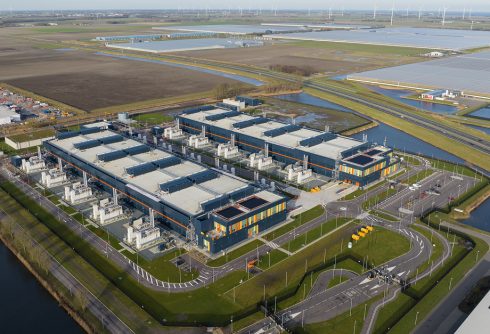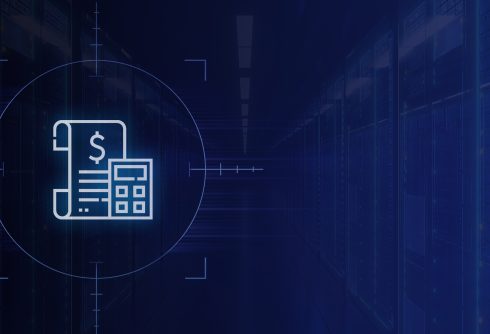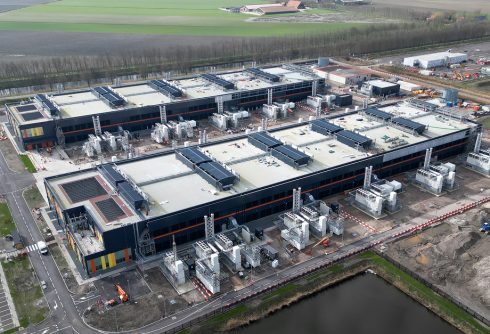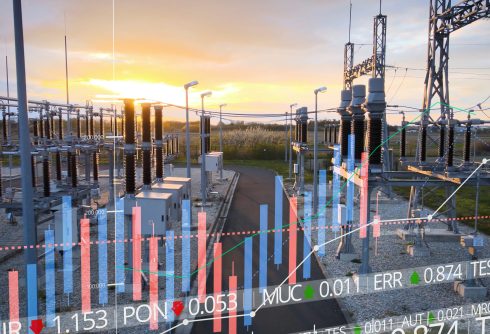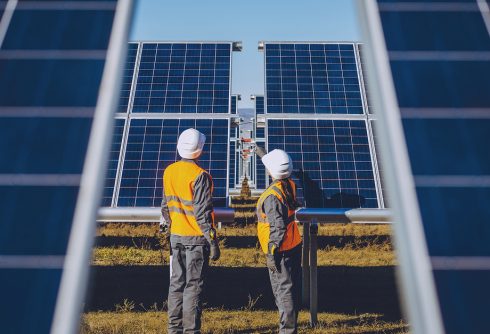The Final Window to Lock In Energy Tax Credits
At a hyperscale data center just outside Phoenix, a diligent finance team realized that their 2025 tax credit projections hinged on specialized eco-friendly transformers that, according to their supplier, wouldn’t arrive until 2027. It’s not an isolated case. Across the U.S., project timelines are colliding with transformer lead times that now routinely exceed 30 months. For energy infrastructure folks, this mismatch between expiring federal incentives and supply reality is nothing less than an eight-figure headache.
By December 31, 2025, renewable energy projects in the U.S. could miss out on millions in federal tax savings. The recently passed One Big Beautiful Bill Act has fast-tracked the end of energy tax credits that were expected to last into the 2030s.
With transformer lead times now extending beyond three years compared to before the pandemic, energy projects that don’t secure equipment orders immediately may miss the final opportunity to capture substantial federal tax benefits. A typical renewable energy project with $50 million in transformer costs could lose $15 million in tax credits by waiting just a few more months.
The math is clear, and the stakes have never been higher. Energy industry leaders face a critical decision: act now to secure much-needed equipment while energy tax credits remain available, or risk losing millions in federal incentives forever.
Renewable Energy Developers Countdown to the Tax Credit Cliff
The One Big Beautiful Bill Act has upended the energy incentive landscape, slashing timelines that once stretched comfortably into the next decade. New federal guidance released in early 2025 has left many renewable developers scrambling to reassess their project timelines and eligibility.
The renewable energy tax credit landscape has become significantly more complex following recent legislative changes. Under the One Big Beautiful Bill Act of 2025 (Public Law 119-21), the Investment Tax Credit (ITC) for solar and wind energy facilities now phases out by December 31, 2027, with construction requirements that must be met well in advance. Meanwhile, the Clean Electricity Investment Credit (Section 48E) provides a pathway for projects beginning construction after 2024, but with strict emissions requirements that limit eligibility to technologies with net-zero greenhouse gas emissions. These shortened deadlines create a serious problem: developers must order equipment years in advance, even though they’ll still face long waits for grid connections and permits.
The 30% investment tax credit remains in place through 2025 for eligible commercial projects. But with long transformer lead times, developers who delay procurement risk missing out on this incentive. For data center-backed renewable energy projects, the financial hit can derail multiple projects in a fiercely competitive space.
The Perfect Storm: Supply Chain Crisis Meets Tax Credit Deadlines
Current transformer delivery timeframes have reached crisis levels, creating a perfect storm for energy infrastructure projects. The analysts at Wood Mackenzie validate Northfield’s earlier report that large power transformers now require between 120 and 210 weeks (up to 4 years) for delivery.
The numbers paint a stark picture of an industry under extreme pressure. Distribution transformers, on average, require 80-120 weeks for delivery. Generator step-up transformers, which are critical for renewable energy projects, need 120 or more weeks. These extended timelines make it virtually impossible for new projects to secure equipment and qualify for tax credits expiring between the end of 2025 and mid-2026.
We’ve previously documented supply chain disruptions that created multiple bottlenecks throughout the transformer manufacturing process. Critical materials like copper and electrical steel continue to experience severe shortages while their prices surge. These material constraints directly impact the production of smart transformers essential for renewable energy integration.
Unprecedented demand drivers are compounding these supply challenges. Data center expansion requires massive electrical infrastructure investments. Renewable energy integration demands specialized smart grid transformers capable of handling variable power loads. Grid modernization for electric vehicle charging networks also creates additional pressure on transformer supplies. When extreme weather events necessitate infrastructure replacement, the surge in demand overwhelms already-constrained manufacturing capacity.
The industry is responding with significant investment commitments. Major power equipment manufacturers have announced just shy of a billion US dollars in new production capacity investments through 2025, and several electric power equipment service companies are expanding operations across a dozen states. However, these investments won’t resolve the immediate supply crisis facing projects with 2025 tax credit deadlines.
Overcoming Risk Requires Timely Action
Our current reality is straightforward but unforgiving. Tax credit deadlines arrive in a few months, while average transformer lead times are way past the breaking point. This gap means that projects ordering equipment today may not qualify for energy tax credits, potentially losing millions in federal incentives. That’s why a global procurement partner with deep expertise in energy is a valuable resource.
Companies must secure transformer orders before the end of 2025 to ensure related costs are documented by mid-2026. The construction “beginning” safe harbor requires documenting 5% of total project costs to be incurred before credit expiration. Transformers for wind and solar installations must also meet increasingly stringent domestic content requirements under the new legislation. For more details, see our guide on Navigating Safe Harbor Rules for Energy Projects in 2025.
Data center energy infrastructure faces similar time pressures. Investments over $10 million qualify for various energy tax credits, but only with proper planning and equipment procurement. Battery storage systems with stipulated capacity could be eligible for 30% investment credits. Combined transformer and energy storage projects may maximize available incentives, but require immediate action to meet the compressed deadlines.
Risk mitigation strategies are essential for projects hoping to capture these final opportunities. Accelerated procurement involves securing transformer commitments with manufacturers immediately, even if final specifications aren’t completely finalized. Safe harbor compliance requires careful documentation of construction beginning before credit expiration dates. Strategic partnerships with suppliers offering expedited delivery programs can provide competitive advantages in this constrained market. But these are increasingly difficult to secure given the fluctuating prices due to changing regulations and tariffs by the new US administration.
The U.S. Department of Energy’s Transformer Resilience and Advanced Components (TRAC) Program provides guidelines for critical infrastructure projects, but emphasizes the importance of early planning and supplier engagement. Projects that wait for traditional procurement timelines will miss these final opportunities entirely.
Green Power Transformers To The Rescue?
Green power transformers represent a critical component in maximizing the final window for energy tax credits. These specialized units, designed specifically for renewable energy applications, must meet strict efficiency and domestic content requirements to qualify for federal incentives. Understanding these specifications is essential for projects racing against expiring deadlines.
Learn more about how modern power transformers are driving growth in renewable energy.
The technology behind green transformers involves advanced electrical engineering optimized for variable power loads common in renewable energy systems. Unlike traditional transformers designed for steady-state loads, green transformers must handle the fluctuating power output from solar panels and wind turbines. This requires specialized core materials, advanced cooling systems, and sophisticated load management capabilities.
Domestic content requirements add another layer of complexity to green transformer procurement. The One Big Beautiful Bill Act strengthened these requirements, mandating higher percentages of U.S.-manufactured components for projects claiming tax credits. Projects beginning construction after December 31, 2025, face even stricter requirements, with potential disqualification for using components from prohibited foreign entities.
Manufacturing capacity for compliant transformers remains limited, with most suppliers already booked through 2026 or beyond. This creates additional urgency for energy projects requiring specialized, eco-friendly transformers that support a more sustainable grid.
The integration challenges between transformers and energy storage systems require careful planning and coordination. Battery storage installations eligible for 30% investment credits must be properly matched with transformer specifications to optimize both performance and tax credit eligibility. This technical coordination takes months to plan and execute properly.
Defeat The Time Crunch with Northfield Transformers
Northfield Transformers understands the time-sensitive challenges facing energy infrastructure stakeholders. We’ve been there.
Our specialized procurement expertise and global supplier relationships enable us to deliver high-voltage power transformers with industry-leading lead times, helping customers navigate the combination of supply chain constraints and tax credit deadlines.
Our competitive advantage includes an expedited transformer delivery program that reduces standard lead times through strategic inventory management and supplier partnerships to guarantee production capacity through 2028. We ensure all equipment meets domestic content and technical requirements for tax credit compliance, eliminating the risk of disqualification due to regulatory oversights. Our project management expertise coordinates complex multi-component energy infrastructure projects, ensuring seamless integration between transformers, energy storage systems, and renewable energy generation equipment.
Quality assurance remains our foundation, with our high-voltage transformers meeting the most demanding energy applications while maintaining the efficiency standards required for green transformer classifications. Our team understands that every week of delay could cost millions in lost tax credits, which is why we prioritize urgent procurement requests from energy infrastructure projects.
The Time to Act is Now
Don’t let the final window for energy tax credits close on your project. The combination of approaching tax credit expiration dates and long transformer lead times demands immediate action.
Reach out to the Northfield team to discuss your power transformer needs and secure your equipment pipeline before critical tax incentives expire.

